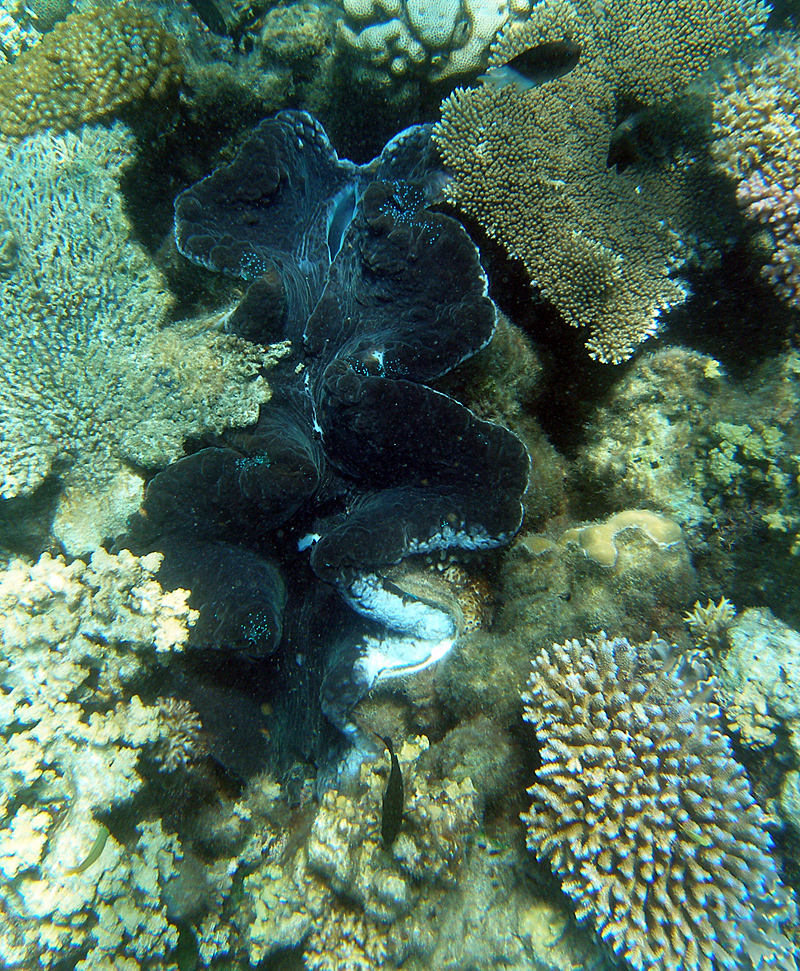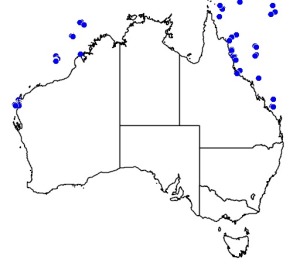
©Andy: A Dusky Gregory territory adjacent to a Giant Clam. The white area on the clam mantle is damage caused by the fish.
Colours
Distinguishing features
A small to medium sized herbivorous damselfish with a dark brown body, although the colour can range from very dark brown to a light tan. A small dark spot is usually visible at the base of the posterior dorsal fin. Juveniles are yellowish posteriorally, grading to light brown anteriorally, with the dark spot prominent. Lives in colonies amongst branching coral, where it farms long filamentous algae.
Size
- Up to 14 cm (Standard length)
Depth range
- Depth range data is not yet available.
Synonyms
Distribution
Distribution and habitat preferences
Shallow reef flats and tops of lagoonal and backreef patches.
Found in most locations around the Island.
Behaviour
The Dusky Gregory is a common herbivorous damselfish at Lizard Island. These fish usually form colonies of 3 to more than 10 individuals, located among the branches of hard corals such as staghorn Acropora and Porites cylindrica. They "farm" algae on the dead branches of the coral, by weeding out undesirable algal species and through their defense of the farm, encouraging the growth of desirable taxa. In Japan, the algae grown by the fish is not found anywhere else - hence a mutualism exists. It is not known whether the algae inside the fish territories at Lizard Island is a mutualist or a generalist species. The farming of the fish has a major impact on the benthic community, and research has shown these fish can modify both algal, invertebrate, and coral communities by their feeding activities.
Web resources
References
- Booth, D.J. and G.A. Beretta (2002). Changes in a fish assemblage after a coral bleaching event, Marine Ecology Progress Series, 245: 205-212. LIRS catalog number 90108.
- Ceccarelli, D.M., T.P. Hughes and L.J. McCook (2006). Impacts of simulated overfishing on the territoriality of coral reef damselfish, Marine Ecology Progress Series, 309: 255-262. LIRS catalog number 90111.
- Ceccarelli, D.M., G.P. Jones and L.J. McCook (2001). Territorial damselfishes as determinants of the structure of benthic communities on coral reefs, Oceanography and Marine Biology: an Annual Review, 39: 355-389. LIRS catalog number 90095.
- View all references





